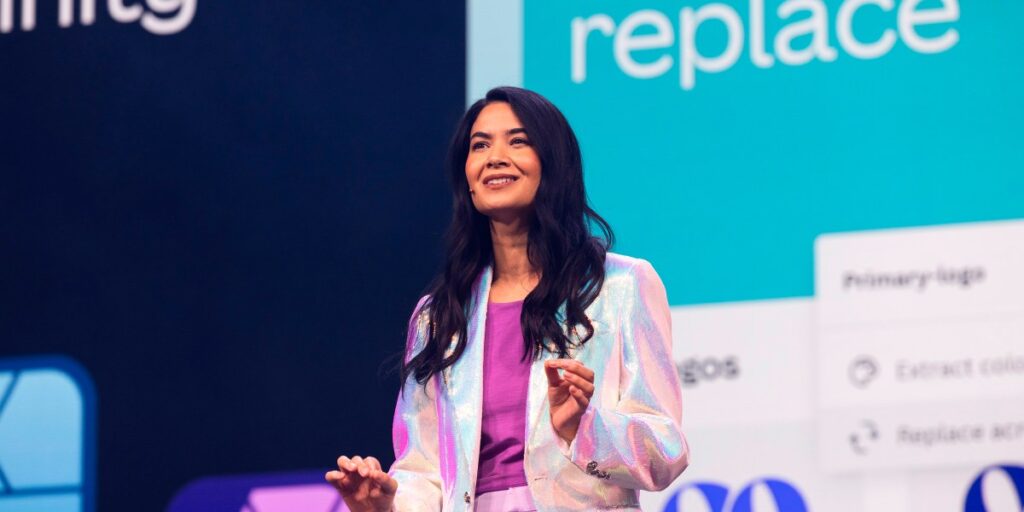Among all industries experiencing an artificial intelligence–fueled revolution, the creative and design fields are among the most susceptible to massive disruptions.
But as creatives embrace new generative AI–enabled tools that turn text into images and videos, the software companies that sell these products say the AI itself is due for a bit of a redesign.
“The promise of AI is that it does everything for you and magically reads your mind, but the actual reality of it is that you still need to interact with it,” says Cameron Adams, cofounder and chief product officer of design platform Canva. “Getting something out of your head and explaining it is a bit of an art and a skill. And it’s not something a lot of us are attuned to.”
Since generative AI tools like ChatGPT made waves beginning in late 2022, companies like Canva, Adobe, and Figma have been adding more AI tools to enhance the productivity of creativity. It has gotten easier, and cheaper, to design more assets—at a time when the industry is being asked to generate a lot more images, text, and videos for different audience segments, geographies, and platforms like social and web.
But a lot of friction remains. Creative professionals are using AI to help them generate all of those assets, but often the tools still have clunky integration with the documents or presentations in which those materials must appear. Lately, design software companies have been focused on the seamless integration of these tools across their product portfolios. “We don’t see it as a single feature,” says Noah Levin, VP of product design at Figma. “We see it as more that it’s a technology that you apply to your whole product in different ways.”
Australia-based Canva has been adding AI-enabled features including text-generation tools that utilize OpenAI’s algorithms; a text-to-image tool; and an AI background remover. Since launching Canva’s AI-powered Visual Suite, the company says it has been keenly focused on ensuring the entire AI-enabled design process is as cohesive as possible.
“We’re increasingly seeing people weave it into their workflows,” says Adams. The bigger bet on AI offerings has helped Canva add 90 million new monthly active users, and the company’s AI products have been used 5 billion times to date.
Adams says that in 2023, the generative AI boom led to a lot of hype and niche tools for creative professionals but that many were struggling with how to integrate these new tools in the work they do. AI text prompt boxes aren’t especially intuitive for users, he notes.
To make things easier, Canva has created prompts in tools like Magic Media to help users work with AI to generate more precise creative assets. For example, a creator can type in a prompt like “man eating delicious pepperoni pizza,” and select style direction offered by Canva, ranging from dreamy to watercolor to anime, as well as aspect ratios including square, landscape, and portrait.
“A responsibility that is put on us as product creators is that we also need to make AI accessible,” says Adams. “We needed to integrate it into our products, into people’s workflows, in a way that makes sense.”
Democratizing the creative process is key for design-focused software companies, especially as the creative process has become more collaborative and concepts are brainstormed by a larger group of stakeholders, not just designers who used to be siloed in a studio.
“Better concepts come out when you have more people collaborating,” says Figma’s Levin.
Figma’s strategy is to both lower the floor of design to give more customers the tools to participate in the creative process, while also raising the ceiling with more sophisticated offers for the experts.
“We want to bring more people into the space who haven’t designed before, who I think can see a lot of value from learning how to communicate visually,” says Levin. “But I also want the experts, the many millions of people we can cater to, to feel like they can do their job better because of AI.”
No matter how AI technology evolves, Adobe says that humans need to stay in the loop when designing creative assets. “I don’t believe these models are creative,” says Ely Greenfield, chief technology officer at Adobe. “I think they are production assistants.”
Among all the negative headlines generated by AI, few industries have faced as much criticism as image generators. Google had to temporarily disable the company’s Gemini image-creator capabilities after the tool was found to perpetuate racial and gender stereotypes. AI image-generator Midjourney recently disclosed it blocked users from creating fake political images ahead of the 2024 U.S. presidential election.
“We put a lot of work into making sure that we cannot generate unintentional harm and bias in the images we create,” says Greenfield.
Adobe’s Firefly is based entirely on licensed content, which helps limit the bias that can creep into the company’s dataset. And while there have been some complaints about the content that gets generated in Firefly, Adobe says it established feedback mechanisms to allow users to flag any of those concerns so it can address them. Since Adobe launched Firefly a year ago, users have created over 6.5 billion images using the generative AI tool.
As for why image generators are often at the center of ethical questions pertaining to AI, Greenfield says that when a data-driven aspect of work is automated, humans don’t tend to mourn the repetitive tasks that they have ceded to machines. But because humans value art, there is so much more emotionally at stake when technology encroaches on how it is made.
“Something that is going to potentially disrupt the ability of artists to make art and make a living doing so, I think tugs at different parts of our brain and our heart,” says Greenfield.
